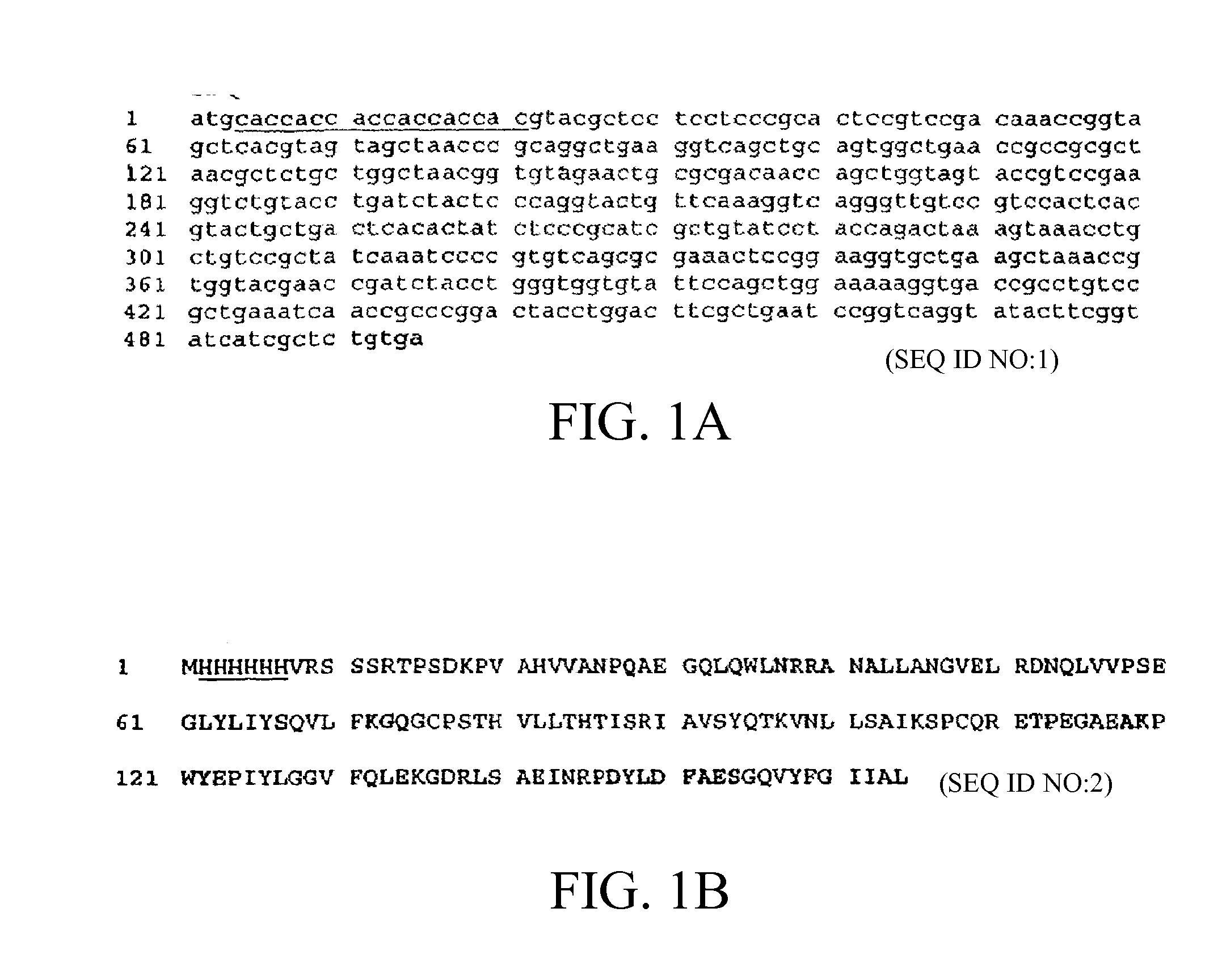Methods of Treating Neurological Diseases
a neurological disease and neuronal technology, applied in the field of peripheral administration of tnf inhibitors, can solve the problems of complex treatment of neurological disorders, inability to provide brain therapeutics, and insurmountable obstacles to the blood brain barrier, so as to prevent neuron death, inhibit demyelination, and inhibit microglial cell activation
- Summary
- Abstract
- Description
- Claims
- Application Information
AI Technical Summary
Benefits of technology
Problems solved by technology
Method used
Image
Examples
example 1
Transmembrane Tumor Necrosis Factor is Neuroprotective
[0135]Animals -Mice containing a conditional IκB kinase β (IKKβ) allele in which exon 3 of the Ikbkb gene, encoding the IKKβ activation loop, is flanked by loxP sites (IKKβF / F) have previously been described (Park et. al. Science 2002; 297:2048-51; Li et al J Immunol 2003; 170:4630-7). Mice with a selective deletion of IKKβ in CNS neurons (nIKKβKO) were generated by crossing IKKβF / F mice with mice that express a neuronal calmodulin-kinase IIa promoter-driven Cre recombinase (CamkIICre; Minichiello et al. Neuron 1999; 24:401-24).
[0136]Experimental autoimmune encephalomyelitis induction and evaluation-EAE in female C57BL / 6, IKKβF / F and nIKKβKO mice was induced by subcutaneous tail base injection of 30 μg of the 35-33 peptide sequence of rat myelin oligodendrocyte glycoprotein (MOG35-55) dissolved in 100 μl saline emulsified in an equal volume of complete Freund's adjuvant supplemented with 400 μg of H37Ra Mycobacterium tuberculosis...
example 2
Peripheral Administration of XPro1595 DN-TNF in AAV-Asyn Rat Model of Parkinson's Disease
[0159]Intranigral injections of rAAV will be used to overexpress human A-syn in DA neurons to achieve pathological mishandling of A-syn that results in significant DA cell death in SN. A second group of animals will receive rAAV-GFP as a negative control. Three days after AAV injections, these two groups will be further divided to receive peripheral administration of DN-TNF XPro 1595 or formulation buffer. To evaluate the extent to which neutralization of solTNF in the periphery attenuates central neuroinflammation and degeneration of nigral DA neurons, rats will be assessed for motor performance weekly for 4 weeks after which brains will be harvested for immunohistological analyses for stereological estimates of nigral DA neuron number, microglia and TNF pathway activation, and T cell infiltration. Cytokines and chemokines expression profiles will also be analyzed at an intermediate timepoint.
[...
example 3
Peripheral Administration of XPro1595 DN-TNF in 6-OHDA Rat Model of Parkinson's Disease
[0166]Unilateral injections of 6-OHDA will be used to induce retrograde degeneration of nigral DA neurons in young adult rats. A second group of animals will receive a mock (saline) lesion as negative control. Three days after striatal injections, these two groups will be further divided to receive peripheral administration of DN-TNF XPro1595 or formulation buffer. To evaluate the extent to which neutralization of solTNF in the periphery attenuates central neuroinflammation and degeneration of nigral DA neurons, rats will be assessed for motor performance weekly for 4 weeks after which brains will be harvested for immunohistological analyses for stereological estimates of nigral DA neuron number, microglia and TNF pathway activation, and T cell infiltration. Cytokines and chemokines expression profiles will also be analyzed at an intermediate timepoint.
[0167]Surgery: Two groups of rats (n=40×2) wi...
PUM
| Property | Measurement | Unit |
|---|---|---|
| Tm | aaaaa | aaaaa |
| temperature | aaaaa | aaaaa |
| temperature | aaaaa | aaaaa |
Abstract
Description
Claims
Application Information
 Login to View More
Login to View More - R&D
- Intellectual Property
- Life Sciences
- Materials
- Tech Scout
- Unparalleled Data Quality
- Higher Quality Content
- 60% Fewer Hallucinations
Browse by: Latest US Patents, China's latest patents, Technical Efficacy Thesaurus, Application Domain, Technology Topic, Popular Technical Reports.
© 2025 PatSnap. All rights reserved.Legal|Privacy policy|Modern Slavery Act Transparency Statement|Sitemap|About US| Contact US: help@patsnap.com



